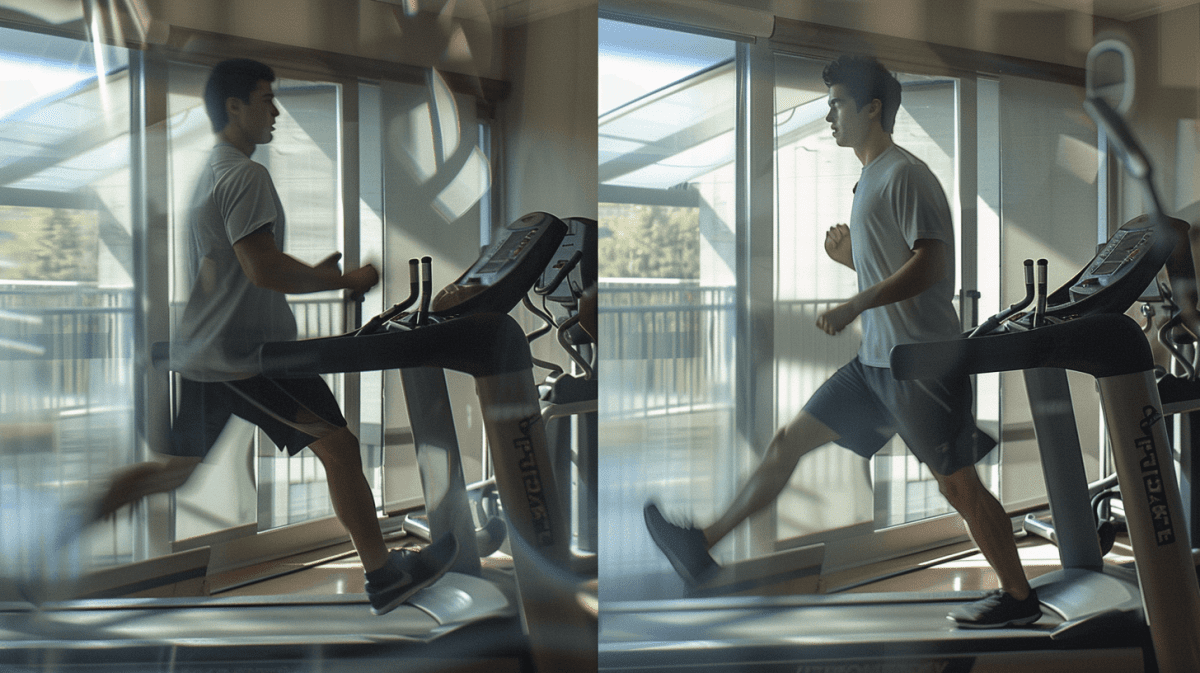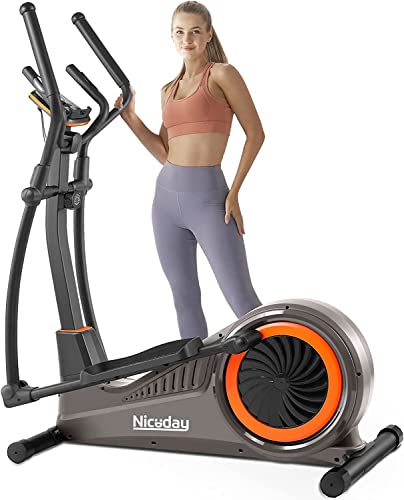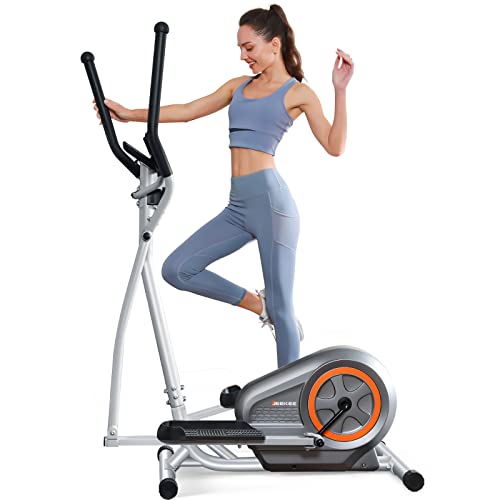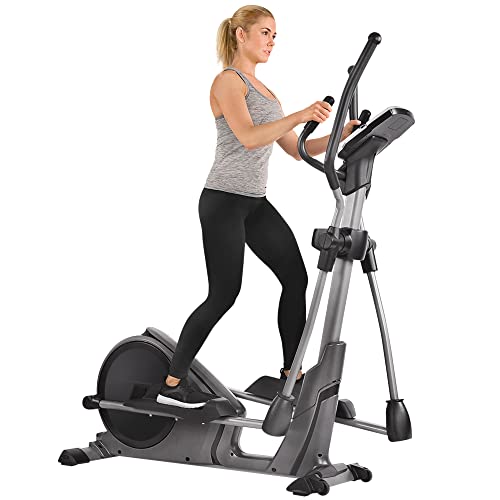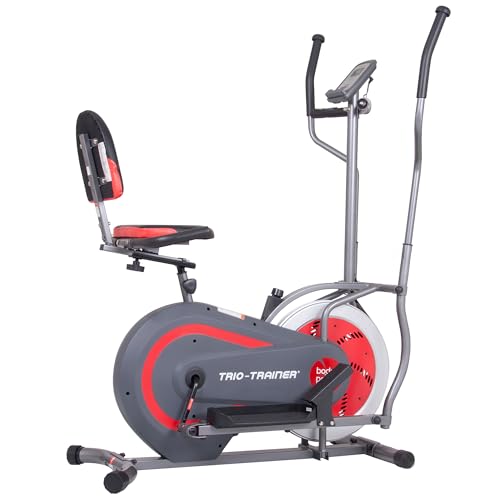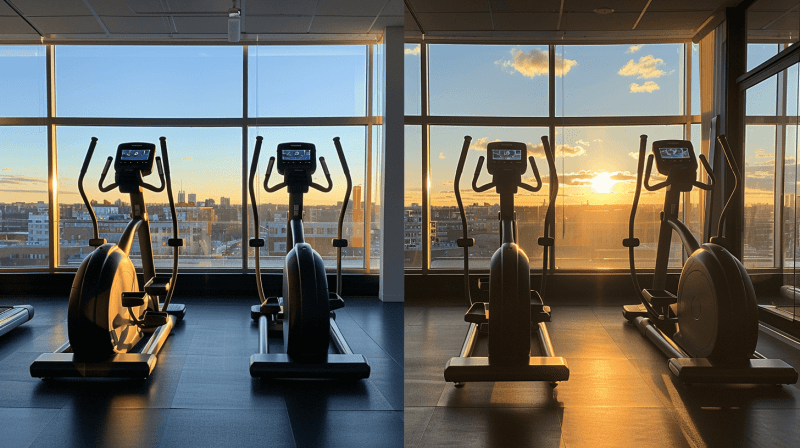When Sarah switched from running 20-minute sprints to 45-minute steady sessions on her elliptical, she noticed unexpected changes in her fitness results. You'll find that both speed and duration play distinct roles in achieving your workout goals, but choosing between them isn't as straightforward as you might think. While faster speeds can spike your heart rate and create an impressive calorie burn, longer sessions at moderate intensities build endurance and may prove more sustainable for long-term fitness. Before you commit to either approach, you'll want to understand how each strategy affects your body and which method aligns with your personal fitness objectives.
Key Takeaways
-
Both speed and duration offer unique benefits - faster workouts maximize calorie burn while longer sessions build endurance and improve fat burning.
-
High-intensity interval training combines fast and slow periods, offering the best balance of calorie burn and cardiovascular benefits.
-
Longer, moderate-intensity sessions are ideal for beginners and help meet weekly fitness requirements while minimizing injury risk.
-
Faster workouts engage fast-twitch muscle fibers for strength, while longer sessions target slow-twitch fibers for endurance.
-
Choose intensity based on fitness goals - weight loss benefits from high-intensity, while endurance improvements come from sustained moderate exercise.
Understanding Speed Vs Duration Benefits
The age-old debate between speed and duration on an elliptical isn't as straightforward as you might think. While increasing your speed can boost your calories burned per minute during your cardio workout, maintaining a sustainable pace for a longer duration might actually deliver better overall results, especially when you're focusing on fat loss and endurance building.
When you're planning your elliptical routine, it's important to ponder how different approaches affect your body. High-intensity interval training, which alternates between sprint-like speeds and recovery periods, can maximize both calorie burn and cardiovascular benefits while keeping your perceived exertion (RPE) manageable. However, you'll need to balance this intensity with your current fitness level and risk of injury.
The most effective approach often combines multiple elements: moderate speeds for longer durations, strategic use of incline and resistance settings, and occasional high-intensity intervals. You'll want to evaluate your specific fitness goals when determining your ideal balance. If you're focusing on endurance, longer sessions at moderate speeds might be your best bet, while those seeking intensive calorie burn might benefit more from shorter, higher-intensity sessions. A moderate 30-minute session on the elliptical can help you achieve the 150-minute weekly requirement recommended by health experts for maintaining optimal fitness.
Heart Rate Training Zones
Understanding heart rate training zones can transform your elliptical workout from a basic cardio session into a precisely targeted fitness routine. By monitoring your heart rate during exercise, you'll be able to optimize your workout based on your specific fitness goals and current conditioning level.
Your elliptical training can be tailored to different intensity zones for maximum effectiveness. In the light intensity zone, working at 50-60% of your maximum heart rate, you'll focus on active recovery and building endurance for longer sessions.
When you increase to the moderate intensity zone at 60-70%, you're working in the ideal range for improving your overall cardiovascular fitness and burning calories efficiently.
For more challenging workouts, the vigorous intensity zone at 70-85% of your maximum heart rate will greatly boost your aerobic capacity and endurance. The maximum intensity zone, ranging from 85-100%, should be used sparingly for high-intensity interval training sessions. You'll want to limit your time in this zone and make certain proper recovery between intense bursts of activity to prevent overtraining and reduce injury risk.
The low-impact design of elliptical machines makes them particularly suitable for maintaining higher-intensity workouts without increasing the risk of joint strain or injury.
Calorie Burn Comparison
Burning calories effectively on an elliptical requires understanding the relationship between speed, duration, and intensity. Research shows that when you increase your pace and resistance, you'll burn approximately 30% more calories per minute compared to slower, steady-state training.
Your calorie-burning potential on an elliptical can be maximized through these proven strategies:
- Incorporate interval training by alternating between high-intensity bursts and recovery periods
- Increase resistance and incline settings to engage more muscle groups
- Maintain a faster pace during your workout sessions while keeping proper form
- Focus on intense workouts rather than longer, low-intensity sessions
While longer sessions on the elliptical will burn calories, the efficiency of your workout matters more than duration alone. When you're pressed for time, choosing a higher-intensity workout with increased resistance will provide better results than a longer, leisurely session.
The key is to challenge yourself through varied combinations of speed and resistance, as this approach triggers greater calorie burn both during and after your training session. Remember that your perceived exertion level should match your fitness goals, allowing you to maintain consistency in your workout routine.
Regular elliptical workouts combined with proper strength training can help boost your metabolic rate and improve overall fat loss results.
Impact on Muscle Development
When it comes to muscle development, your choice between faster or longer elliptical workouts greatly impacts which muscle fibers you'll strengthen. Your body responds differently to various training intensities on fitness equipment, with faster sessions primarily engaging fast-twitch muscle fibers that build power and strength.
To Train Smarter, you'll want to understand how Muscle Activation varies between workout styles. During longer sessions at lower resistance, you're primarily targeting slow-twitch muscle fibers, which enhance your endurance capacity. Conversely, cranking up the resistance and speed recruits more fast-twitch fibers, leading to increased strength development.
The ideal approach combines both training styles to maximize your results. You can structure your weekly workouts to include both high-intensity shorter sessions and longer endurance-focused rides. For instance, try incorporating 20-minute high-resistance intervals twice a week, balanced with 45-minute steady-state sessions on alternate days. This varied approach guarantees you're developing both types of muscle fibers, leading to more thorough fitness gains and better overall muscle development. By maintaining proper elliptical form with relaxed shoulders and an engaged core, you'll ensure optimal muscle engagement during both fast and long sessions.
Recovery and Endurance Factors
In light of endurance and recovery needs, your choice between faster or longer elliptical sessions plays a crucial role in your fitness progress. To take advantage of both training methods, you'll want to understand how different approaches affect your body's ability to recover and build stamina.
When planning your elliptical workouts, consider these key factors for optimal results:
- Work your upper and lower body simultaneously during longer sessions (30-60 minutes) to maximize endurance benefits and weight loss potential
- Keep your heart rate in the moderate zone during extended workouts to improve aerobic capacity and fat burning
- Incorporate high-intensity intervals (1-3 minutes) followed by recovery periods to enhance cardiovascular fitness
- Balance longer, steady-state sessions with shorter, intense workouts throughout the week
The most effective approach combines both duration and intensity to target different energy systems. Moderate-intensity sessions lasting 30-60 minutes help build your aerobic base, while shorter, high-intensity intervals improve your recovery capacity. This balanced strategy ensures comprehensive cardiovascular development and supports long-term fitness goals, whether you're focusing on endurance building or weight management. Low impact exercises on the elliptical protect your joints while allowing you to maintain consistent training without extended recovery periods.
Optimal Resistance Level Settings
The ideal resistance setting on your elliptical can make or break your workout effectiveness. When you're adjusting the resistance or the incline, you'll want to find a level that challenges you without compromising proper form.
Make sure you can maintain a conversation while exercising, as this indicates you're working at a sustainable intensity.
If you're short on time, you might be tempted to increase the resistance considerably to maximize your workout. However, it's vital to resist this urge, as excessive resistance can lead to poor form and reduced workout quality. Instead, focus on finding a balanced setting that allows you to maintain steady movement while still feeling the burn in your muscles.
You'll know you've found the right resistance level when you can complete your planned workout duration without feeling overwhelmed or sacrificing technique. If you notice your form deteriorating or find yourself struggling to maintain a consistent pace, don't hesitate to scale back the resistance. Remember that a moderate, sustainable resistance setting that you can maintain throughout your session will ultimately prove more beneficial than an overly challenging level that forces you to cut your workout short.
Maintaining proper body alignment while exercising helps prevent injury and ensures you get the most out of your elliptical workout session.
Personalized Workout Strategy Planning
Developing an effective elliptical workout strategy starts with a clear understanding of your personal fitness goals. Whether you're aiming for weight loss, endurance, or toning your lower body, you'll need to create a plan that aligns with your objectives and current fitness level.
To maximize your elliptical workouts, try to keep these essential elements in mind:
- Monitor your heart rate while pedaling forward to guarantee you're working at the right intensity for your goals
- Alternate between push and pull movements to engage different muscle groups throughout your session
- Start with shorter durations at moderate speeds, gradually increasing both as your fitness improves
- Combine steady-state cardio with interval training to prevent plateaus and maintain progress
Working with a fitness professional can help you determine the optimal balance between speed and duration for your specific needs. They'll assess your current capabilities and create a progressive plan that prevents overexertion while delivering results. Remember to track your performance metrics regularly, including calories burned and perceived effort, to make informed adjustments to your routine as you advance in your fitness journey.
Cross-Training Effectiveness Assessment
Runners seeking alternative training methods will find elliptical machines to be highly effective cross-training tools, backed by scientific research comparing physiological responses between elliptical workouts and running. You'll get significant bang for your buck when incorporating elliptical training into your routine, as it maintains cardiovascular fitness while providing low impact exercise for your joints.
The elliptical machine offers unique advantages for training without the repetitive stress of running, allowing you to maintain fitness during recovery periods or injury prevention phases. You'll engage your upper body through the machine's handles while simultaneously working your legs, creating an all-encompassing full-body workout that complements your running regimen.
To assess cross-training effectiveness, pay attention to your perceived exertion levels and adjust the machine's resistance and incline settings accordingly. Studies show that when you match these variables to your typical running effort, you'll achieve similar physiological benefits. Remember to maintain proper form and cadence on the elliptical machine, as these factors directly influence your workout's effectiveness and help prevent potential training-related issues.
Frequently Asked Questions
Is It Better to Go Faster or Longer on an Elliptical?
You'll get the best results by combining both speed and duration. Set ideal resistance settings, maintain proper stride length adjustments, and engage targeted muscle groups while maximizing calorie burn through varied 30-45 minute workouts.
What Speed Should I Do on an Elliptical?
Like a well-oiled machine, you'll want to maintain 60-80 RPM on your elliptical. Focus on proper form technique while adjusting resistance and incline. This keeps you in your target heart rate zone effectively.
How Do I Get the Best Results on the Elliptical?
For an efficient elliptical workout, maintain 60-80 RPM, adjust resistance and incline levels, incorporate interval training, use proper technique with engaged arms, and monitor your heart rate. You'll maximize results this way.
What Is the Best Pace for an Elliptical?
You'll get ideal results maintaining 70-90 RPM on the elliptical. Aim for 70-80 RPM during longer sessions, and push to 80-90 RPM for intense intervals. This pace maximizes muscle engagement and calorie burn.
Conclusion
Picture yourself gliding smoothly on your elliptical, finding your sweet spot between intense bursts and steady endurance. You'll achieve your best results by combining both speed and duration strategically, like a skilled conductor balancing different instruments. Focus on maintaining 30-minute moderate sessions while incorporating high-intensity intervals that match your fitness level. When you're mindful of your heart rate zones and recovery needs, you'll create a sustainable routine that delivers ideal health benefits.
